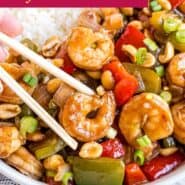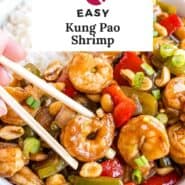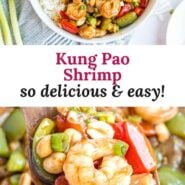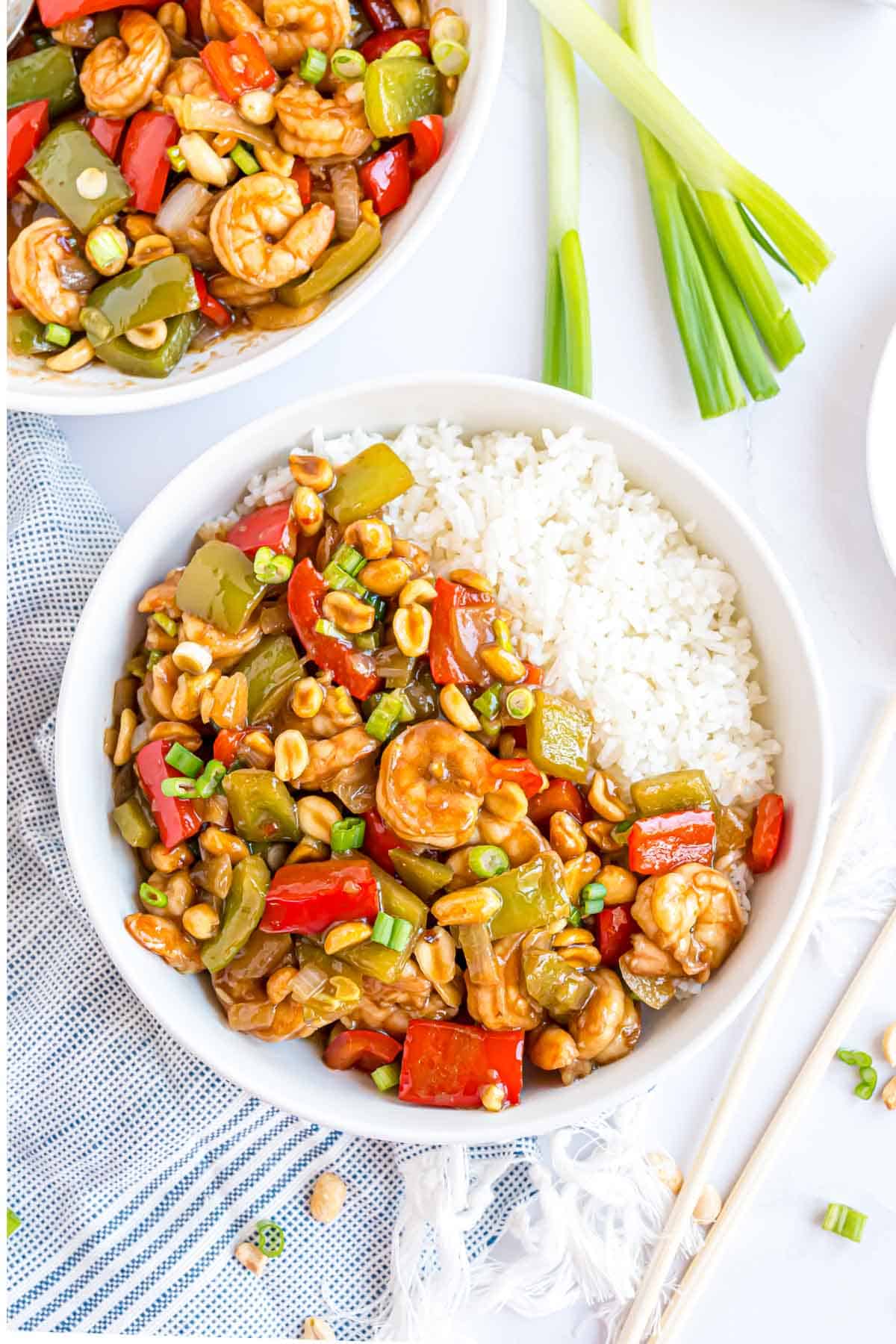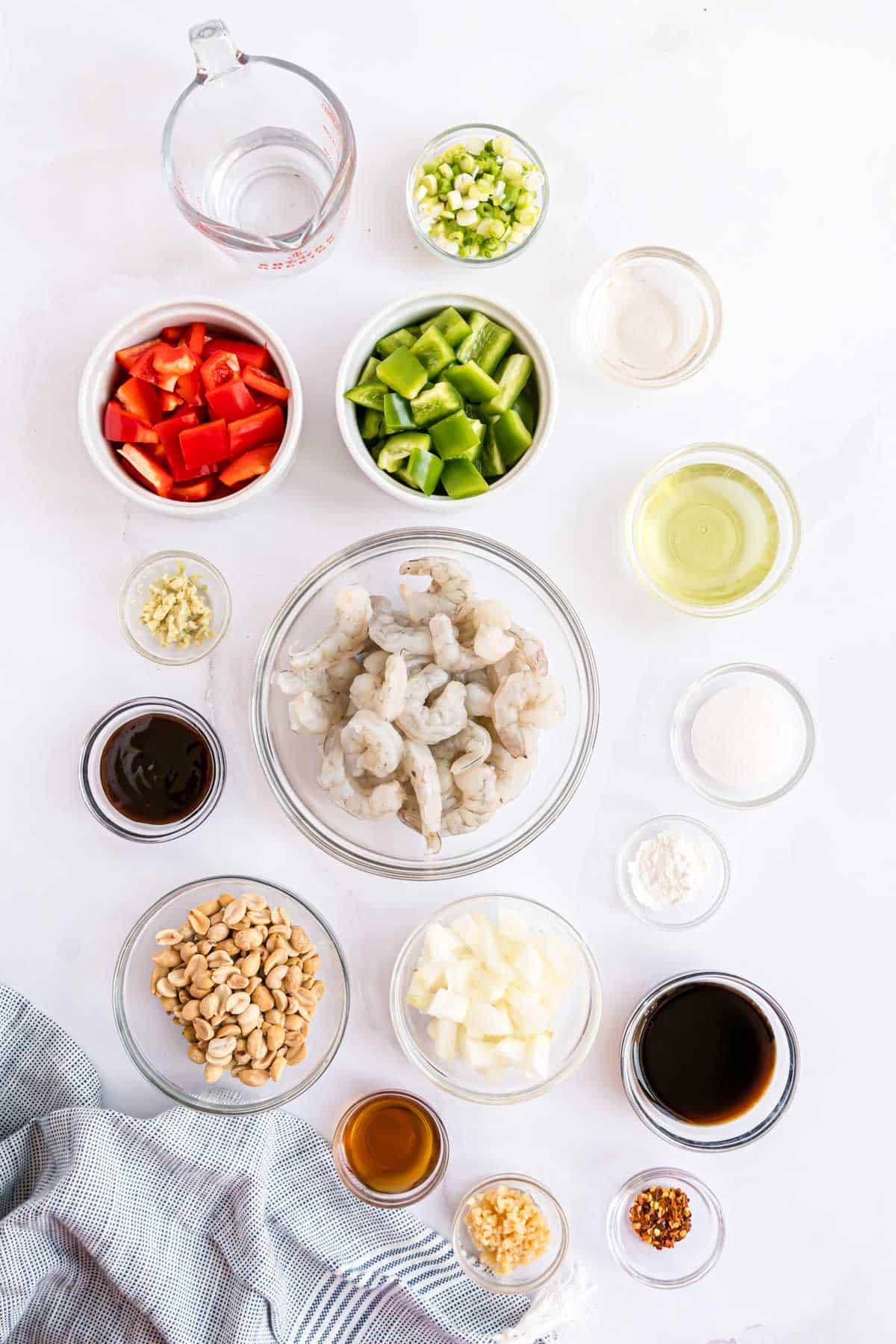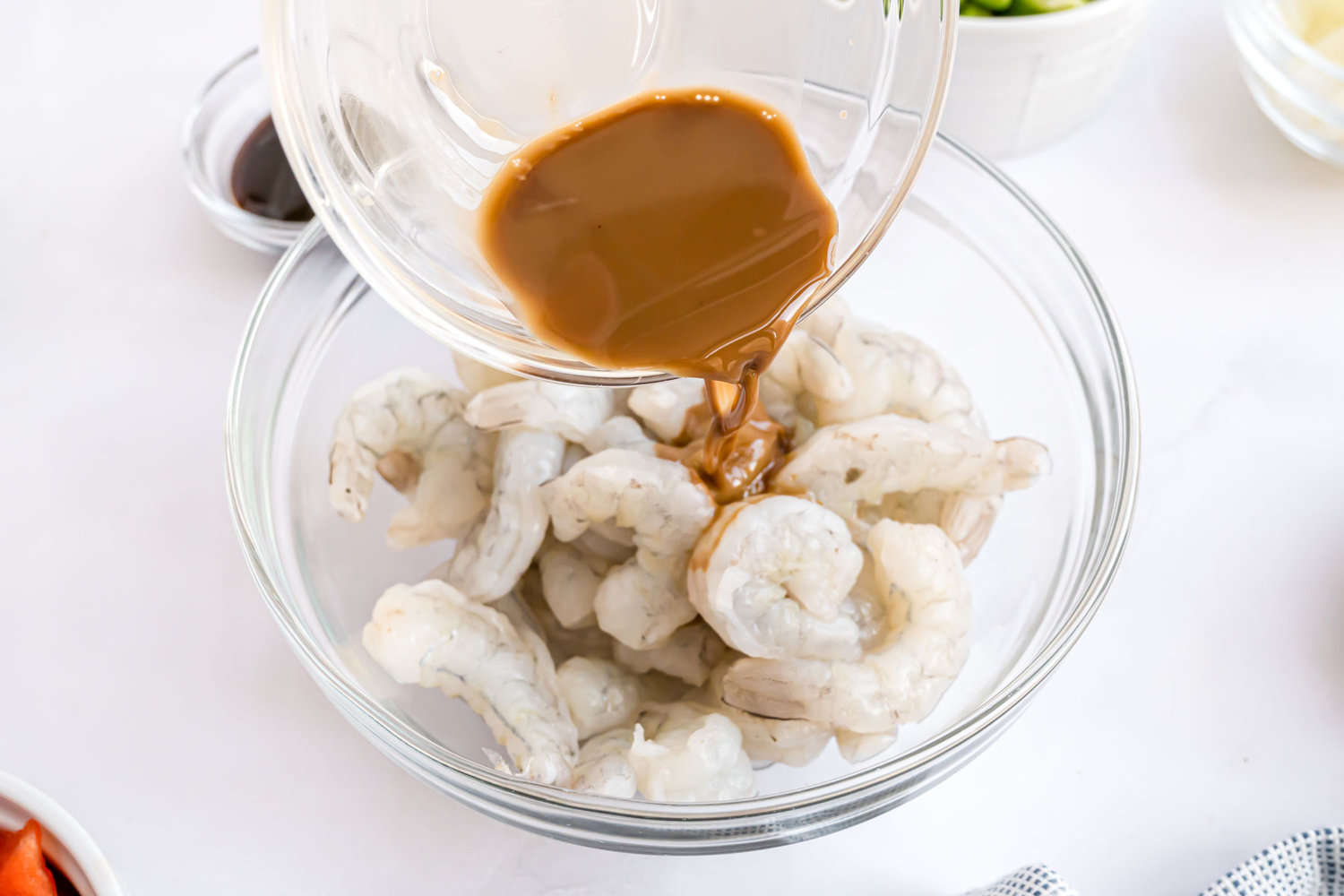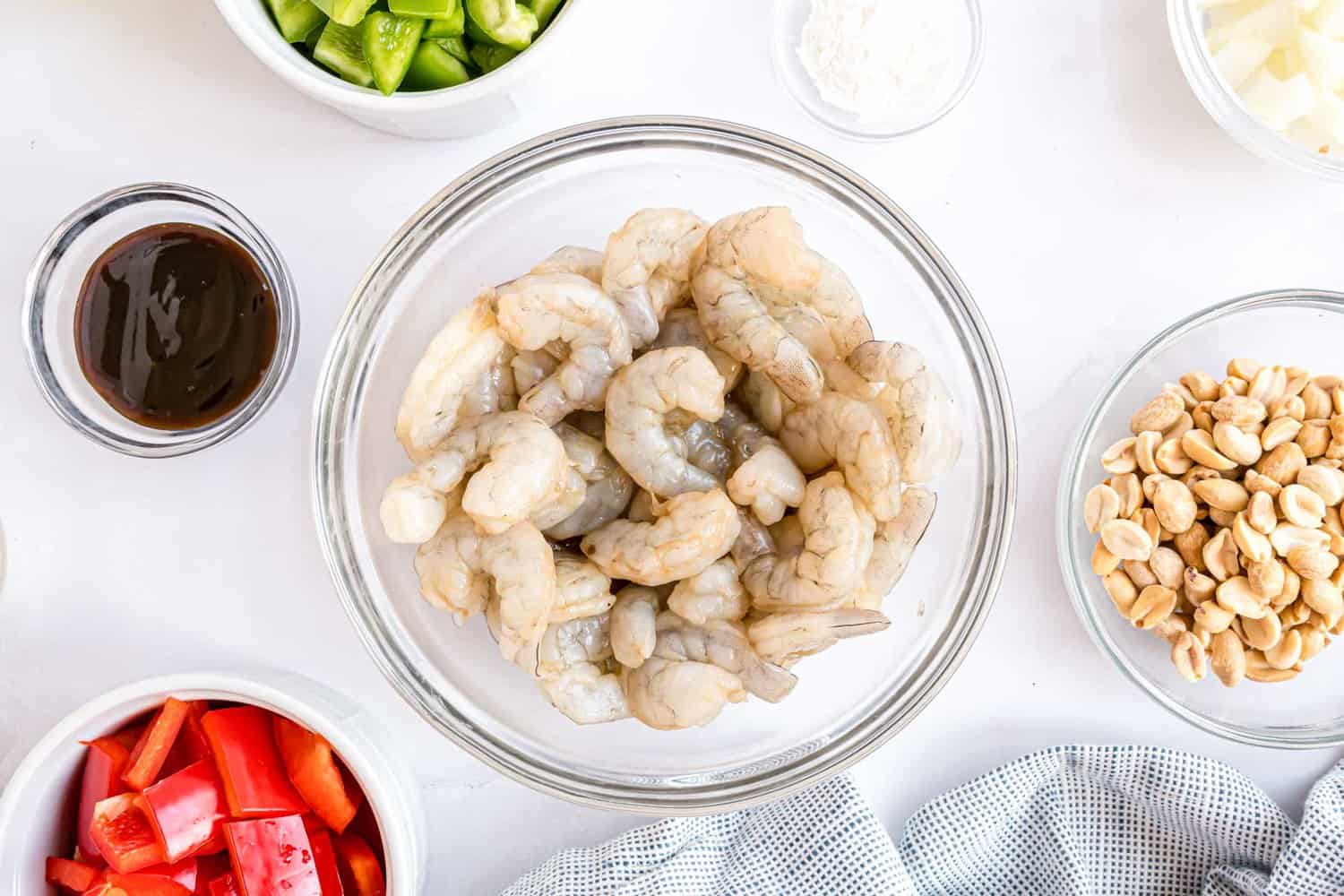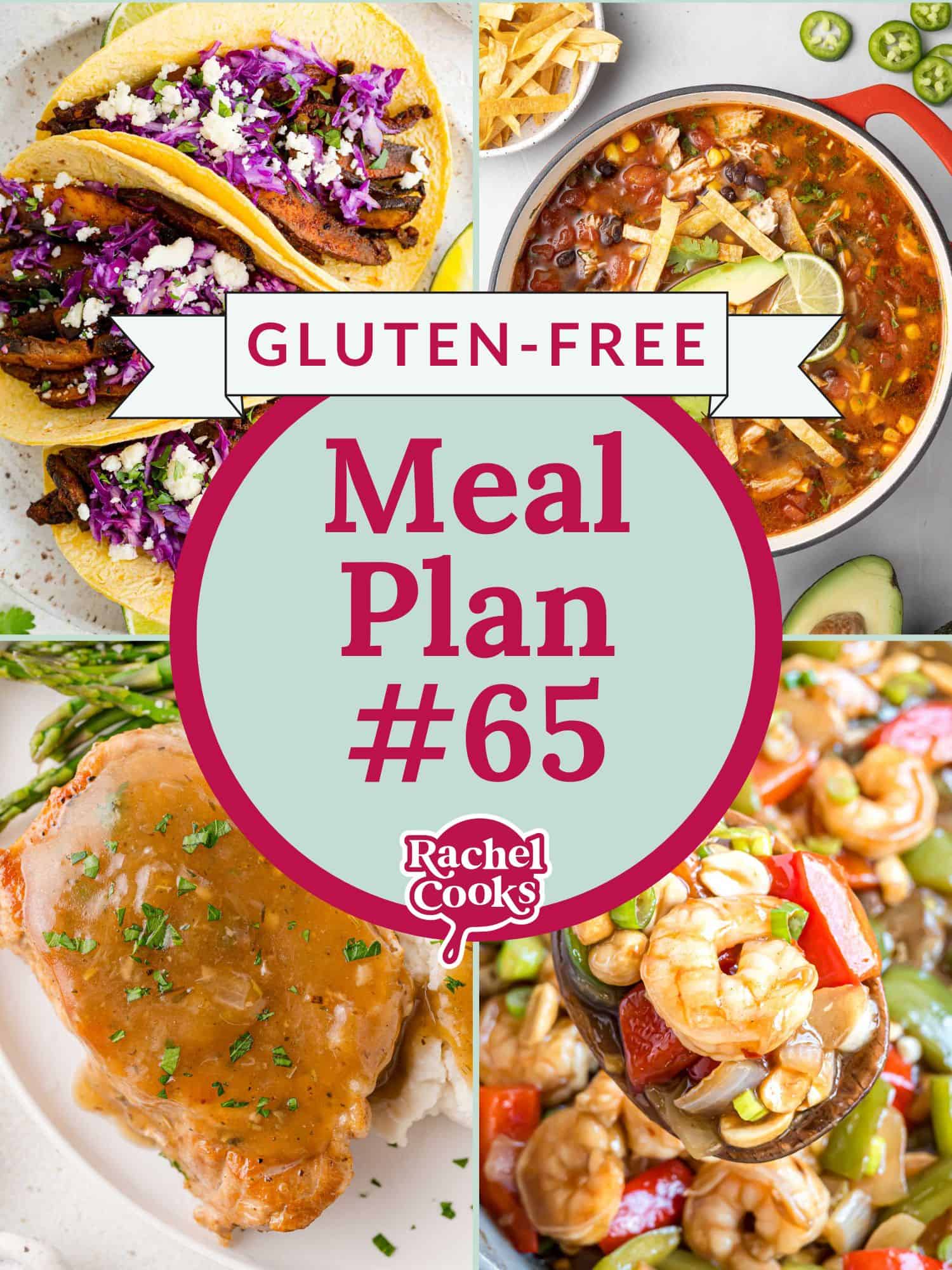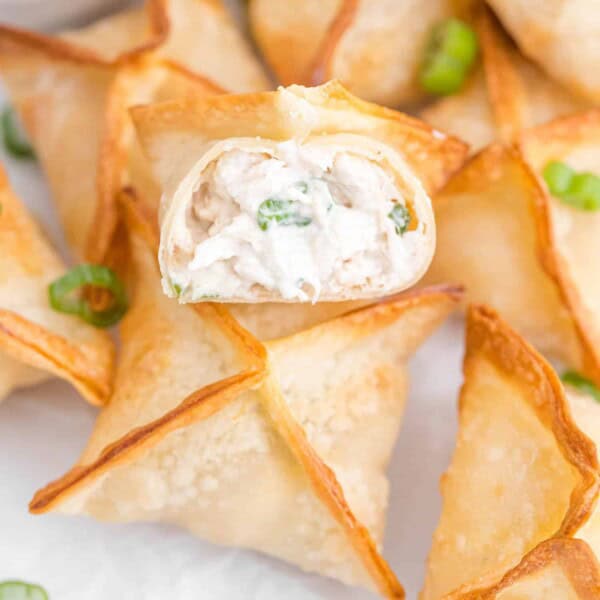How long it takes: 30 minutes Equipment you’ll need: large skillet or wok, mixing bowl Servings: 4
About This Kung Pao Shrimp Recipe
Easy to find ingredients. Because this is an “Americanized” recipe, you’ll be able to find everything you need at most grocery stores, even if you don’t live close to a major city. You may already have most of the ingredients already in your pantry. Ready in 30 minutes. Stir fries are usually a pretty quick meal to make. They are comprised of a lean protein, lots of vegetables, and a savory sauce. Kung pao shrimp is no exception. You can have this meal on the table in less than a half hour! If you like the idea of stir fry meals, try shrimp and broccoli stir fry, honey walnut shrimp, beef stir fry with vegetables, or sweet and sour chicken stir fry. Lots of spicy sweet and sour flavor. Kung pao shrimp is an exciting flavorful dish with a tangy spicy sauce and plenty of umami from toasted sesame oil, soy sauce, and hoisin sauce. Fresh bell peppers, garlic, ginger root, and onion are featured. Crispy roasted peanuts provide flavor and textural contrast.
Ingredient Notes
Be sure to refer to the recipe card below for measurements.
Shrimp: You’ll need a pound of large-size shrimp. I like the 20/30 size for this dish. Be sure to choose raw shrimp that are peeled and deveined, tails on or tails off, your choice. Frozen shrimp are fine. Thaw them according to package instructions. Soy Sauce: Traditional recipes call for shaoxing wine in the marinade. I substituted soy sauce because it’s easier to find and you probably already have it in your pantry or fridge. Soy sauce is also used to make the kung pao sauce. Cornstarch: A teaspoon of cornstarch is added to the marinade; another teaspoon is used to thicken the sauce. Rice Vinegar: Commonly used in stir fry sauces, rice vinegar is clear and light flavored. It may be called rice wine vinegar. Avoid seasoned rice vinegar which has added salt and sugar. Traditional recipes use Chinese black vinegar. Balsamic vinegar is sometimes substituted. Hoisin Sauce: Look for this sauce in the Asian section of your grocery store. It’s a savory, slightly sweet sauce that is commonly used in Chinese cuisine. Sugar: Kung pao shrimp has a sweet and sour profile. Sugar helps balance the acidic (sour) vinegar. Toasted Sesame Oil: This dark brown oil has a strong distinctive flavor that you’ll recognize right away if you enjoy Chinese cuisine. Don’t get it confused with regular sesame oil which is nearly colorless and very mild in flavor. Look for toasted sesame oil in the Asian section of your market. Crushed Red Pepper Flakes: In this recipe, red pepper flakes add the spicy heat usually found in kung pao shrimp. Adjust the heat level to your preference. Oil: For a stir fry, I recommend an oil that can withstand high heat such as grapeseed, avocado, vegetable, or peanut oil. Garlic: You’ll need 3 to 4 cloves of fresh garlic. Ginger: Look for fresh ginger root in the produce section. Peel off the dry outer portion of the root using a vegetable peeler, paring knife, or the edge of a spoon. You’ll need about a one inch piece of ginger root. Red and Green Bell Peppers: Colorful chopped bell peppers are an important part of this dish, providing textural, flavor, and color contrasts. Onion: Choose a sweet onion, such as red, Spanish, or Vidalia. Green Onions: Sliced green onions provide a fresh bright flavor. You may know them as spring onions or scallions. Roasted Peanuts: Kung poa dishes are traditionally served with raw peanuts that are lightly toasted in a wok. To make things easier, I like to use unsalted roasted peanuts or cashews.
How To Make Kung Pao Shrimp
Cook the rice. If you want to serve rice with the kung pao shrimp, get that started first. Jasmine rice, basmati rice, or any long grain white rice is a good choice; brown rice is a bit more nutritious. I like to use my Instant Pot to cook rice. Marinate the shrimp. Combine the soy sauce and cornstarch in a large bowl. Add the shrimp (thawed if frozen) and stir well. Let the shrimp marinate about 15 minutes. Make the sauce. In a small bowl or glass measuring cup, blend together the sauce ingredients. Prep the vegetables. While the shrimp is marinating, you can chop the peppers and onions. Slice the green onions and mince the garlic cloves and fresh ginger. Set them aside for now. Cook the shrimp. In a large skillet or wok, heat a tablespoon of oil over medium high heat. When it’s shimmering, add the shrimp and arrange it in a single layer. Cook the shrimp for a couple of minutes, then flip them over and cook for another two minutes or until they’re done (smaller-sized shrimp will get done more quickly). Transfer the shrimp from the skillet to a plate. Use a few paper towels to wipe out the pan. Stir fry the vegetables. Heat a couple more tablespoons of oil in the skillet over medium high heat. Stir fry the garlic and ginger briefly, until fragrant. Add the chopped onions and peppers to the pan. Stir fry for about 5 minutes or until they are the desired tenderness. Add the sauce. Turn the heat down to medium and add the shrimp to the pan. Give the sauce ingredients one more quick whisk and then add the sauce to the pan. Cook for a minute or two, until the sauce thickens slightly and coats the vegetables and shrimp. Stir in the peanuts and sliced green onions. Your kung pao shrimp is ready to serve! If you like, garnish it with additional sliced green onions, red pepper flakes, or sriracha.
Tips For Success
Have everything prepped before you start. Stir fries move along quickly. It’s important to have all the ingredients ready to go before you heat the pan. Cut up the vegetables and make the sauce before you cook the shrimp. If you’re serving rice, get that cooking first. Don’t overcook the shrimp. Overcooked shrimp can be tough and rubbery, and they cook really quickly. When cooking the vegetables, make sure the vegetable are the desired tenderness before adding the shrimp back to the skillet. Since the shrimp are already cooked at this point, you don’t want them to spend a lot more time in the pan when combining the vegetables, shrimp, and sauce in the final step.
Recipe Variations
Try a different protein. Substitute boneless skinless chicken breasts, cut into bite-sized pieces, to make kung pao chicken. Try crispy baked tofu or air fryer tofu for a vegetarian entrée. Substitute different vegetables. Any vegetable that you like to use for a stir fry would work well in this recipe. Try broccoli, carrots, celery, sugar peas, etc. Make more sauce. This recipe doesn’t have oodles of sauce. The sauce generously coats the shrimp and vegetables but they aren’t swimming in sauce. If you prefer a saucier dish, double the ingredients for the sauce. Looking for a more authentic dish? Traditional kung pao recipes use Sichuan pepper or whole red chili peppers instead of red pepper flakes. Instead of soy sauce in the marinade, try shaoxing wine. Chinese black vinegar is often used in the marinade instead of rice vinegar. If you happen to have these ingredients or prefer them, feel free to make substitutions. More shrimp recipes: Try firecracker shrimp, coconut shrimp, honey walnut shrimp, or spicy garlic shrimp.
Make Ahead Ideas
Get a head start: Thaw frozen shrimp in the refrigerator overnight. Stir up the sauce, cover and refrigerate. Cut up the onions, peppers, green onions; refrigerate. If you like, mince the garlic and ginger ahead of time, too, and refrigerate. Prepping ahead of time will save you at least 10 to 15 minutes when you’re ready to cook this meal.
Storing & Reheating Leftovers
Refrigerate: I like to combine leftover shrimp and rice because the sauce keeps the rice from becoming too dry. Put leftovers into an airtight container and refrigerate for up to 2 days. Freezing is not recommended. Reheat: Individual portions can be microwaved until heated through. Do not overheat the shrimp because it may get tough or chewy. Larger quantities can be reheated in a skillet over medium heat until warm.

